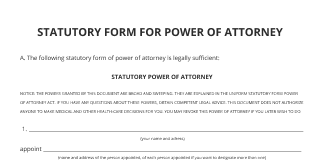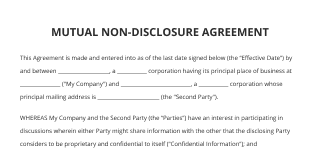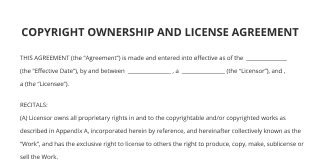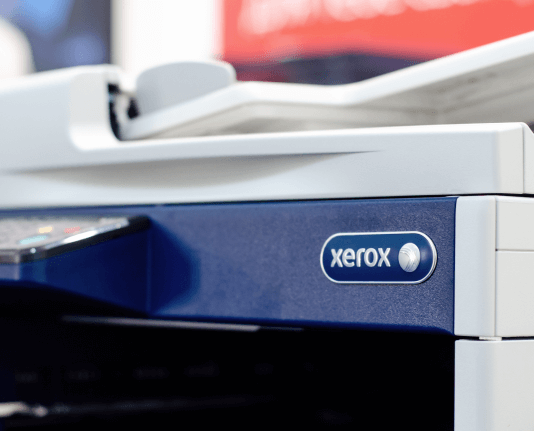Understanding Charge Invoice Vs Sales Invoice for Your Business Needs
Move your business forward with the airSlate SignNow eSignature solution
Add your legally binding signature
Integrate via API
Send conditional documents
Share documents via an invite link
Save time with reusable templates
Improve team collaboration
See airSlate SignNow eSignatures in action
Understanding Charge Invoices
A charge invoice is a document issued by a seller to a buyer, detailing the goods or services provided, along with the amount due. This type of invoice typically indicates that payment is expected at a later date, allowing the buyer to receive products or services before settling the balance. Charge invoices can be particularly useful for businesses that maintain ongoing relationships with clients, as they facilitate flexibility in payment terms.
When creating a charge invoice, it is important to include essential details such as the invoice number, date of issue, payment terms, and a breakdown of the items or services provided. This clarity helps ensure that both parties understand the transaction and can track payments effectively.
Defining Sales Invoices
A sales invoice, on the other hand, represents a formal request for payment for goods or services rendered. Unlike charge invoices, sales invoices typically require immediate payment upon receipt or within a specified timeframe. This type of invoice is crucial for businesses that operate on a cash basis, as it helps maintain consistent cash flow.
Sales invoices should include similar information to charge invoices, such as the invoice number, date, and itemized list of products or services. However, they often emphasize the payment due date and may include late payment penalties to encourage timely payment.
Key Differences Between Charge Invoices and Sales Invoices
While both charge invoices and sales invoices serve the purpose of documenting transactions, there are notable differences between them:
- Payment Terms: Charge invoices allow for delayed payment, whereas sales invoices typically require immediate payment.
- Usage Context: Charge invoices are often used in ongoing business relationships, while sales invoices are common in one-time transactions.
- Impact on Cash Flow: Sales invoices contribute directly to cash flow, while charge invoices may delay cash inflow until payment is received.
When to Use Charge Invoices
Charge invoices are ideal for businesses that want to offer their customers flexibility in payment options. For example, service providers such as consultants or contractors may issue charge invoices to clients who require time to review the services rendered before making a payment. This approach can enhance customer satisfaction and foster long-term relationships.
Additionally, businesses that sell to repeat customers or have established credit terms may find charge invoices beneficial, as they can streamline the billing process and reduce administrative tasks associated with frequent transactions.
When to Use Sales Invoices
Sales invoices are best suited for businesses that require immediate payment for their goods or services. Retailers, for instance, typically issue sales invoices at the point of sale, ensuring that payment is collected before the customer leaves the store. This practice helps maintain a healthy cash flow and minimizes the risk of unpaid invoices.
Sales invoices are also useful for businesses that operate online, as they provide customers with a clear record of their purchases and payment obligations, enhancing transparency and trust in the transaction process.
Best Practices for Creating Invoices
Regardless of whether you are using charge invoices or sales invoices, adhering to best practices can improve your invoicing process:
- Be Clear and Concise: Ensure that all terms, conditions, and amounts are clearly stated to avoid confusion.
- Use Professional Templates: Utilizing well-designed invoice templates can enhance your brand image and make your invoices easier to read.
- Follow Up on Payments: Establish a system for tracking invoices and following up on payments to maintain cash flow.
airSlate SignNow solutions for better efficiency
Our user reviews speak for themselves






Why choose airSlate SignNow
-
Free 7-day trial. Choose the plan you need and try it risk-free.
-
Honest pricing for full-featured plans. airSlate SignNow offers subscription plans with no overages or hidden fees at renewal.
-
Enterprise-grade security. airSlate SignNow helps you comply with global security standards.

Charge invoice versus sales invoice: Grasping the distinction
In overseeing your business finances, it's essential to comprehend the difference between a charge invoice and a sales invoice. Each document fulfills different roles in the billing process, and knowing how to employ them effectively can enhance your operations. In this guide, we will examine how to utilize airSlate SignNow for your invoicing requirements.
Charge invoice versus sales invoice: Detailed guide to using airSlate SignNow
- Launch your web browser and go to the airSlate SignNow homepage.
- Establish a free trial account or log in if you already possess one.
- Choose the document you want to sign or send for signatures and upload it.
- If you intend to reuse this document, save it as a template for future reference.
- Access your uploaded document and make necessary modifications, such as adding fillable fields or inserting specific details.
- Sign the document and incorporate signature fields for the recipients.
- Click 'Continue' to set up and send an eSignature invitation.
airSlate SignNow provides a robust solution for businesses aiming to simplify their document signing process. With its comprehensive feature set, users can anticipate a substantial return on investment while enjoying transparent pricing with no concealed costs. Furthermore, the platform is crafted for user-friendliness and scalability, making it suitable for small to medium-sized enterprises.
In summary, airSlate SignNow streamlines the procedure of sending and signing documents, ensuring efficiency and clarity in your invoicing practices. Initiate your free trial today and discover the advantages firsthand!
How it works
airSlate SignNow features that users love
Get legally-binding signatures now!
FAQs
-
What is the difference between a sales invoice and a charge invoice?
Cash Invoice is like a sales invoice, but it is used particularly for cash sale of goods. On the other hand, Charge Invoice is also like a sales invoice, but it is used particularly for sale of goods on credit or on account. Which means the sale is not paid immediately but will be paid on a future date. -
What is the difference between a charge and an invoice?
Invoices help in tracking outstanding accounts receivable. Charges are transactions that increase the amount owed by a client and can be seen from an invoice record. -
What is a charge invoice?
A Charge Invoice, sometimes called a Credit Invoice, is your best friend for any sale made on credit. It's the official document you create when you provide a product or service, but your customer will pay you for it later. You're essentially "charging" the amount to their account. -
What is the purpose of a charge invoice?
What is the purpose of a charge invoice? A charge invoice is used to record a sale that was made on credit. It details what was sold, how much it costs, and serves as the official request for future payment. -
What is the main purpose of the invoice?
The primary purpose of an invoice is to formalize the agreement between the seller and the buyer regarding the sale of goods or services. Invoices serve several essential functions: Request for Payment: An invoice is a formal request for payment, specifying the amount due and the due date. -
What is the difference between a statement of account and a charge invoice?
An invoice is a request for payment for specific goods or services rendered, while a statement is a summary of all account activity over a specific period. An invoice is typically issued immediately after the goods or services are provided. -
What is the difference between a charge invoice and an official receipt?
The main difference between an invoice and a receipt is that an invoice is issued prior to a payment being made, and a receipt is issued after a payment is processed. An invoice is a request to collect payment issued by the seller, whereas a receipt is proof of payment given to the buyer.
What active users are saying — charge invoice vs sales invoice
Related searches to Understanding charge invoice vs sales invoice for your business needs
Get more for charge invoice vs sales invoice
- Discover the top billing software for contractors
- Discover top billing software for Mac that simplifies your workflow
- Discover the top billing software for small businesses
- Discover the top e-invoicing software for seamless document management
- Discover top free billing software for seamless document management
- Discover the top free billing software for contractors
- Discover the top free billing software for freelancers
- Discover the top free invoice generator for your business
Find out other charge invoice vs sales invoice
- Design a free digital signature with airSlate SignNow
- Discover the benefits of e-authenticator for seamless ...
- Unlock seamless digital autograph creation for your ...
- Create a digital signature for PDF documents ...
- Learn how to install electronic signature in pdf ...
- Ensure compliance with validation for electronic ...
- How to input digital signature in PDF effortlessly
- Easily insert a digital signature in a pdf with ...
- Easily sign and manage your signed PDF documents
- Easily attach digital signature PDF for seamless ...
- Insert digital signature field for seamless eSigning
- How to build a form with an electronic signature ...
- Generate signature online in Word effortlessly with ...
- Apply e-signature on PDF effortlessly with airSlate ...
- Easily attach e-signature in PDF with airSlate SignNow
- Effortlessly add signature to signed PDF with airSlate ...
- Easily place digital signature PDF with airSlate ...
- Easily apply signature in PDF online with airSlate ...
- Create your internet agreement effortlessly with ...
- Easily add e-signature to Word document with airSlate ...






























